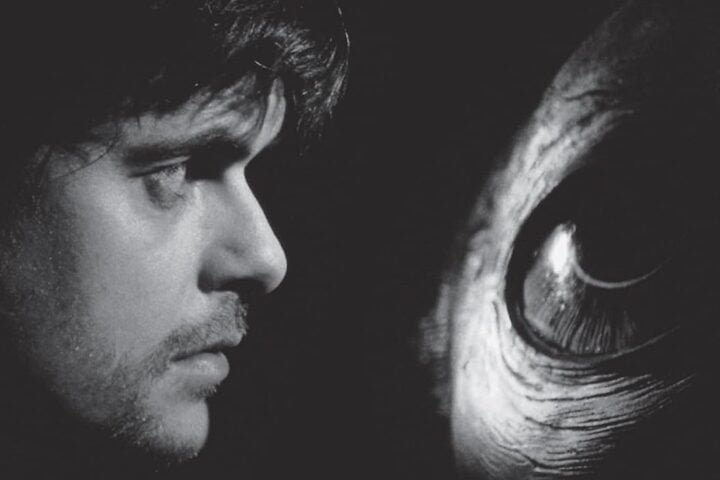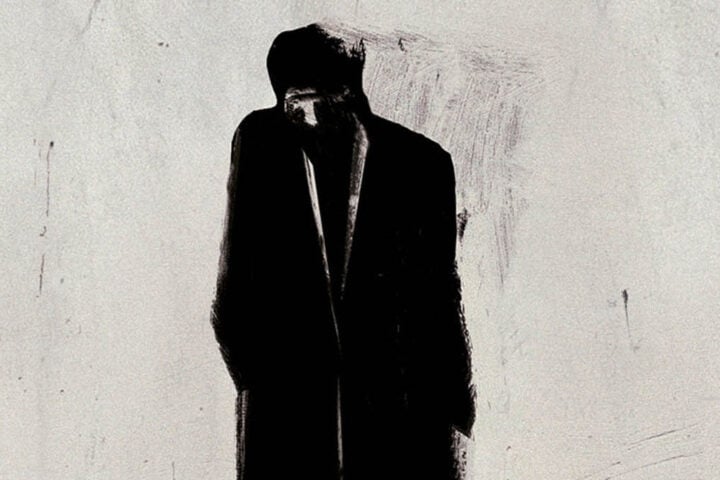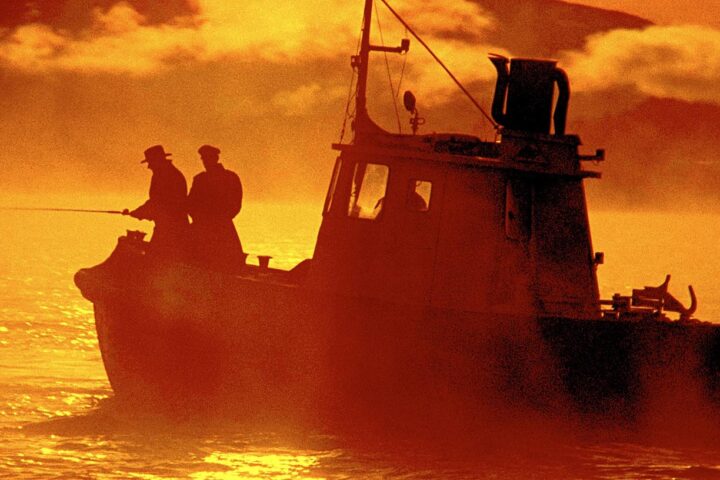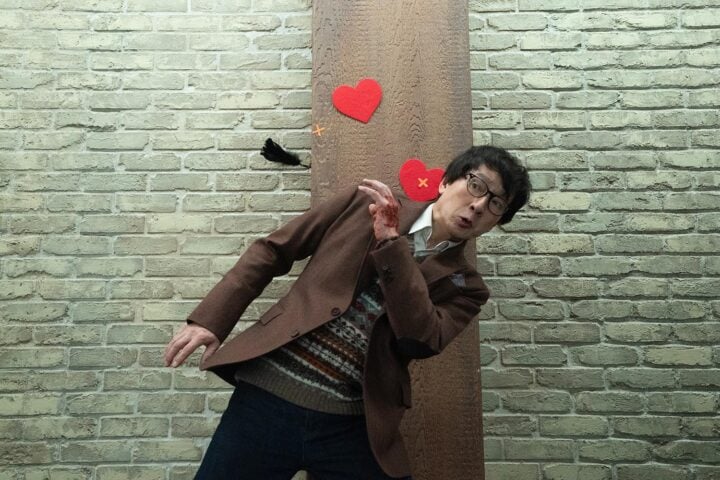I was a film studies student before I ever thought about writing a memoir, so it made sense that my first book would center a deep engagement with the movies as I told a story about my own life. My memoir The Long Hallway is a coming-out and coming-of-age story told through the lens of my childhood obsession with John Carpenter’s classic horror film Halloween, specifically the masked character of Michael Myers as an embodiment of my closeted and—at least to my mind at the time—dangerous and insidious self.
I shared early drafts with film scholar and essayist Doug Dibbern, a friend and colleague whose memoir was also published around the same time as mine. Alone in the Dark: Cinephilia and the Heroic Imagination traces a lineage of film viewing alongside a genealogical and intellectual origin story in what becomes a moving portrait of the development of an aesthetic sensibility.
Doug and I spoke over email about our memoirs, which both explore the links between film spectatorship and self-conception, thinking together about how writing about the movies ultimately led us back to writing about ourselves.
Richard Scott Larson: We’ve both recently published memoirs that use our relationships to film spectatorship as through lines for telling our own origin stories. You’ve written two other books about the cinema, and I’m wondering about how you approached this more personal turn in Alone in the Dark. What did the memoir as a form offer you in terms of approaching film as a subject from a more personal perspective?
Doug Dibbern: I wanted to write an unusual memoir—that is, I didn’t want to write a chronological account of the events that have made up my life. I was aiming for something a bit more poetic, an intellectual rumination on the intertwined issues of identity, aesthetic taste, and family history. During the drafting process, you suggested that I refer to it not as a “memoir of the imagination,” which helped me frame what I was trying to do for myself.
I think this helped me shape the book differently on the micro-level of sentence and paragraph and the macro-level of the whole. That is, on the sentence level, I felt freer to write longer, more labyrinthine, nested sentences because I wanted to capture the way that the mind sometimes drifts from one subject to another in a meditative sprawl. On the larger scale, I no longer felt the obligation to represent or account for films in their entirety as I have in my scholarly and critical writing in the past. Instead, I felt free to pick out and focus on fragments from films that moved me. This fragmentary approach felt more honest to the emotional experience of living with a movie—especially a movie that we love. Even if I’ve seen a particular film a dozen times, I’m often struck, when I see it again, how little of the story I’d retained, how I’d misremembered some essential scene, or that I’d forgotten entire subplots.
In that regard, I was curious how you chose to organize your book around your childhood obsession with Halloween. You weave through scenes from the movie and scenes from your own past, sometimes chronologically, sometimes not, in a way that felt organically extemporaneous. Why did you decide to structure your memoir like this? How did these decisions relate to the fragmentary nature of memory, especially when those memories are traumatic?
RSL: I have so many memories attached to Halloween that it only felt natural to pass those connections to the reader, and my personal story also begged for a recognizable object to tether my recollections to as I wrote my way back in time. I was giving shape to what had felt like shapeless experiences when I lived them, and the film was a handhold for myself—and hopefully the reader as well—as the fragments cohered into a beginning, middle, and an end.
I started writing about Halloween without having seen it for many years, and only when I rewatched it to fact-check what I’d been committing to the page did the structure of my book become clear to me. I’d remembered Michael Myers and the murders and his extended confrontation with Laurie Strode at the end, but I’d forgotten the long build-up of tension as day turns to night when only the audience knows what the darkness will bring, the characters still ignorant of their fates. And when I understood that narrative structure as a metaphor for the experience of the closet—the endless waiting for the thing to be exposed that you know will eventually become impossible to conceal any longer—I knew I wanted to write a book that lingered in those years of a closeted childhood before the rupture of coming out and the assumption of a new kind of identity category.
By focusing on film aesthetics and recursive ruminations on identity and origins, the imagination becomes a literal setting in Alone in the Dark. The cinematic landscape that you conjure for us becomes an actual place for the reader to inhabit throughout the book, and I’m wondering how you settled on that very effective approach. And did the group of films you included emerge organically as you wrote, or did you have an early sense of how you wanted to map out their representation in a particular way for the reader?
DD: When I read biographies of my favorite artists, I often find myself bored in the first few chapters as the writer works through an obligatory Freudian fascination with childhood watersheds. That’s why I think that every biography of an artist should begin in media res depicting their struggles creating their first great work of art. It’s the art, not the person, after all, that brought me to their biography in the first place. Thus, I barely touched on my own childhood and began the book instead with the first time I saw a Béla Tarr film, Sátántangó. This was one of my first momentous experiences of struggling with a great work of art that would come to define my cinephile experience as an adult.
On first blush, then, it might seem that you chose to write about your closeted adolescence and that I didn’t. But the experience of the closet permeates both of our projects. Like you, I grew up in an undistinguished setting somewhere in the middle of the continent. And like you, I escaped in order to consciously define myself as a more interesting type of person in New York. I think gay kids of our generation, especially, were much more likely than straight kids to feel the need to break free from the confines of home. For both of us, creating a geographical separation from our childhoods felt like a necessary step in the conscious act of identity formation.
Perhaps you focused more explicitly on your adolescent struggles coming to terms with your sexuality because you’re a more courageous memoirist than I am. But lately, after re-reading your book and thinking of it more directly in comparison with my own, I’ve been thinking that my approach was also partly the product of my own experience growing up in the closet, which made me want to actively reject the sometimes difficult facts of my adolescence, denying the closet any power over me. In this sense, maybe the exuberant fabulosity I’d felt the need to hide away during my adolescence was only able to surface in an adult fascination with an aesthetics of baroque exuberance. Perhaps I unconsciously conjoined these notions of a closeted adolescence, geographical distancing, and an occulted extravagance; it’s not a coincidence, then, that I so often focused on characters wandering through elaborate camera movements and on these film’s themes of travel and dislocation, flight and escape, and the fear of stasis.
You organize your book around recurring themes that include varied modes of travel, delving into and escaping from the interiors of various haunted houses, moving homes, and hiding from homes. On the level of style, too, you’re always moving, interweaving between biography and film analysis and back again. And you conclude the book with a return to home—but a home that’s not really your home and which never can be anymore. How do you think that some of the aesthetic and thematic decisions you made might have been based on notions about your own cloistered personas and of these geographical and migratory aspects inherent to queerness?
RSL: The complicated idea of home is certainly embedded in the ending of my book, when I return after my mother sold the house of my adolescence and I realize how completely I’d turned my back on the place where I grew up in favor of the world I’d discovered elsewhere. Of course so much of that is about the closet and the person I’d been in those years, desperate to start what I thought of as my “real life,” childhood being a sort of purgatory that I’d been made to suffer in order to eventually reap the rewards of everything that would come after.
One motivation for writing The Long Hallway was to give that version of myself and my life at the time the integrity that a story requires, a rendering with depth and complexity—a reclaiming of the past through narrative. Memoir is time travel, and our murky and unreliable memories are the vehicles we hope will take us to the point at which we can do the work of gathering up the bits and pieces of personal experience and seeing what shape they take when we shove them up against each other in a new light.
I think the queer migration you asked about is also a migration of the mind. We’ve left geographical locations behind, but we’ve also abandoned the parts of ourselves that we wanted to remake. The closet is full of shame, but one part of that shame we don’t talk about enough is how the experience of the closet is one of being held captive against our will, and of not being strong enough to escape. And since home is where I first began living with that shame, I’ve run as far as I could in the opposite direction because there’s no place for any reminders of that time in the version of myself that I now want to show the world.
Our relationships with particular cinematic experiences allowed us to do this time travel work that memoir demands. A film can provide the bridge that leads to identity formation. You write that you were “so often focused on characters wandering through elaborate camera movements and on these film’s themes of travel and dislocation, flight and escape, and the fear of stasis,” and what I’m hearing is that you were looking for some kind of reflection of yourself as you internalized those themes. The films were translating something about yourself back to you. And for me, the mechanics of film form also gave a shape to something I couldn’t see without it. Only through examining Halloween again could I properly render that time in my life on the page.
The Long Hallway is now available from the University of Wisconsin Press and Alone in the Dark: Cinephilia and the Heroic Imagination is now available from Punctum Books..
Since 2001, we've brought you uncompromising, candid takes on the world of film, music, television, video games, theater, and more. Independently owned and operated publications like Slant have been hit hard in recent years, but we’re committed to keeping our content free and accessible—meaning no paywalls or fees.
If you like what we do, please consider subscribing to our Patreon or making a donation.





